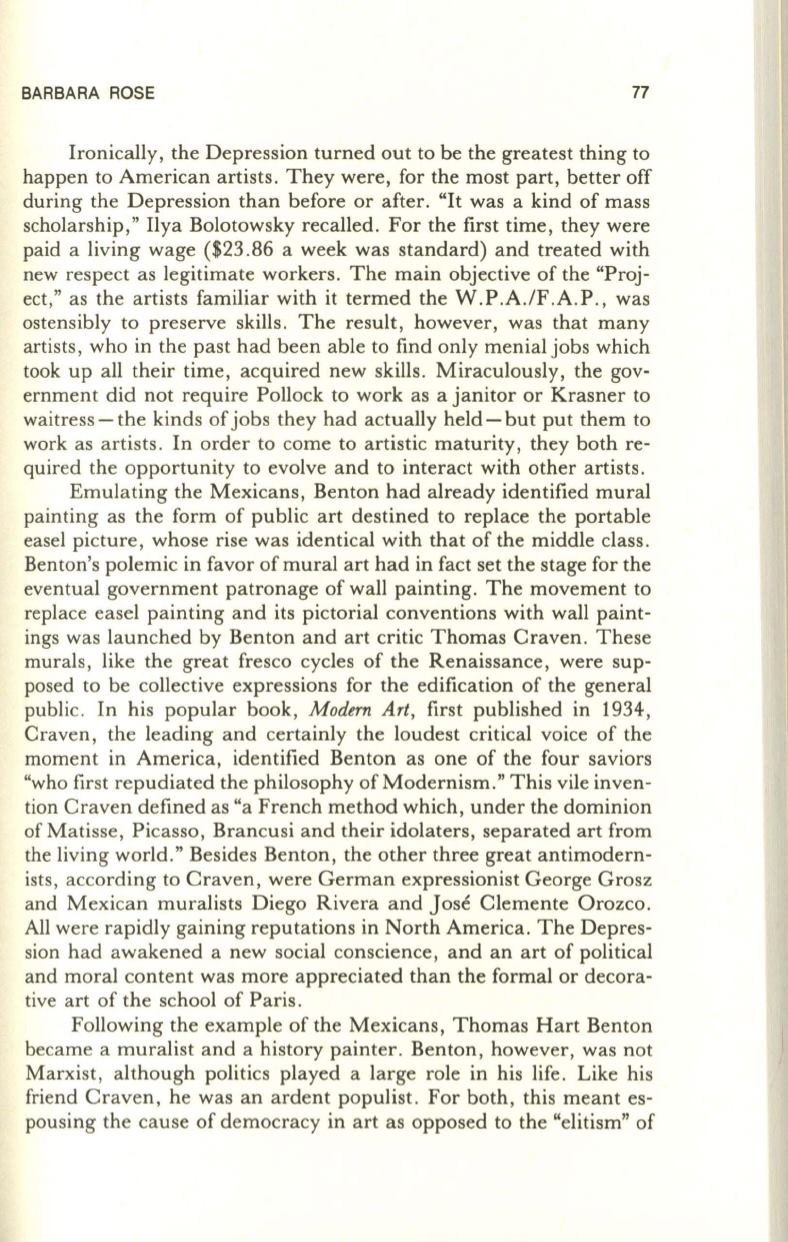
BARBARA ROSE
77
Ironically, the Depression turned out to be the greatest thing to
happen to American artists. They were, for the most part, better off
during the Depression than before or after.
"It
was a kind of mass
scholarship," IIya Bolotowsky recalled. For the first time, they were
paid a living wage ($23 .86 a week was standard) and treated with
new respect as legitimate workers. The main objective of the "Proj–
ect," as the artists familiar with it termed the W .P.A.lF .A.P., was
ostensibly to preserve skills. The result, however, was that many
artists , who in the past had been able to find only menial jobs which
took up all their time, acquired new skills . Miraculously, the gov–
ernment did not require Pollock to work as a janitor or Krasner to
waitress - the kinds of jobs they had actually held - but put them to
work as artists . In order to come to artistic maturity, they both re–
quired the opportunity to evolve and to interact with other artists.
Emulating the Mexicans, Benton had already identified mural
painting as the form of public art destined to replace the portable
easel picture, whose rise was identical with that of the middle class.
Benton's polemic in favor of mural art had in fact set the stage for the
eventual government patronage of wall painting. The movement to
replace easel painting and its pictorial conventions with wall paint–
ings was launched by Benton and art critic Thomas Craven . These
murals , like the great fresco cycles of the Renaissance, were sup–
posed to be collective expressions for the edification of the general
public. In his popular book,
Modern Art,
first published in 1934,
Craven, the leading and certainly the loudest critical voice of the
moment in America, identified Benton as one of the four saviors
"who first repudiated the philosophy of Modernism." This vile inven–
tion Craven defined as "a French method which, under the dominion
of Matisse , Picasso, Brancusi and their idolaters, separated art from
the living world ." Besides Benton, the other three great antimodern–
ists, according to Craven, were German expressionist George Grosz
and Mexican muralists Diego Rivera and Jose Clemente Orozco.
All were rapidly gaining reputations in North America . The Depres–
sion had awakened a new social conscience, and an art of political
and moral content was more appreciated than the formal or decora–
tive art of the school of Paris.
Following the example of the Mexicans, Thomas Hart Benton
became a muralist and a history painter. Benton, however, was not
Marxist , although politics played a large role in his life. Like his
friend Craven, he was an ardent populist. For both, this meant es–
pousing the cause of democracy in art as opposed to the "elitism" of


